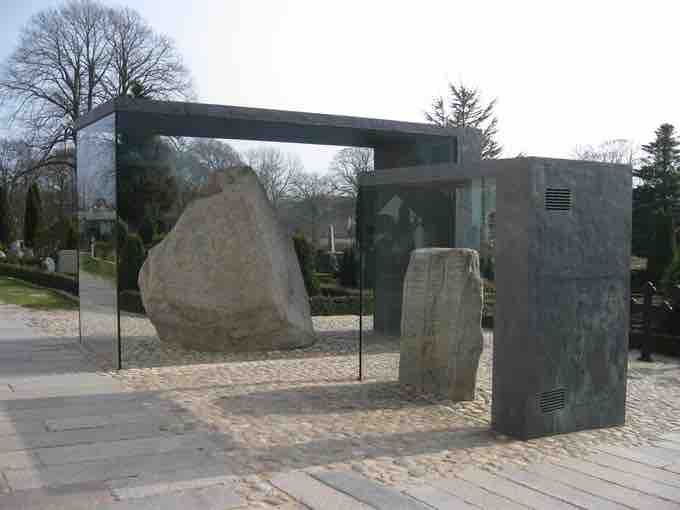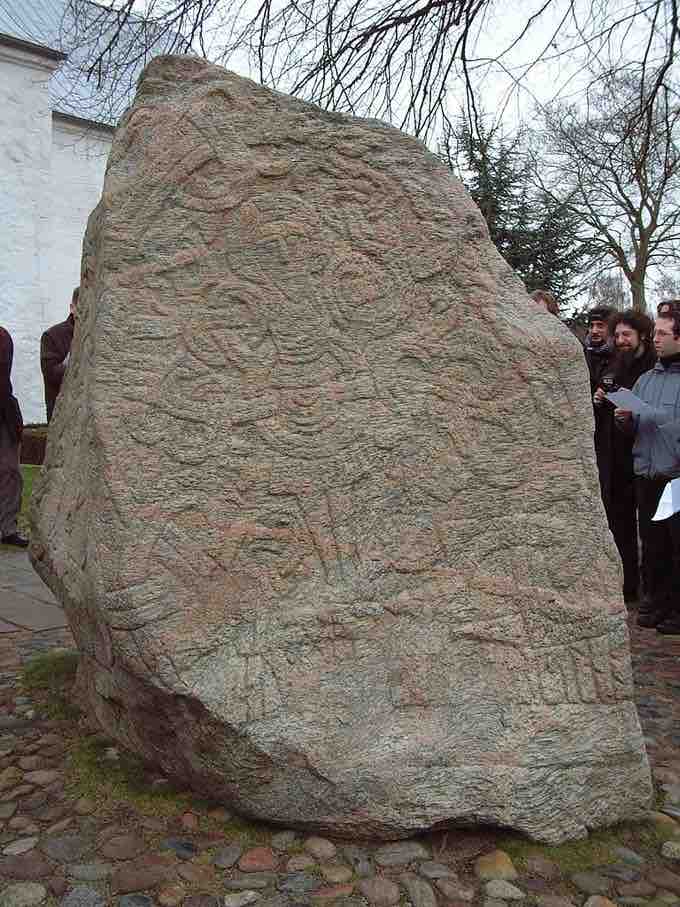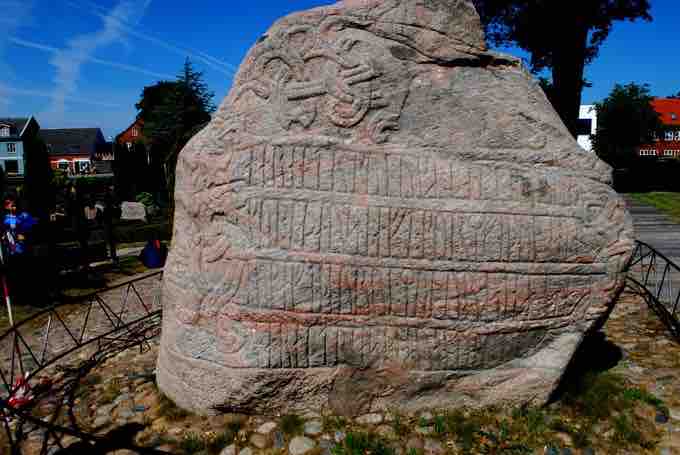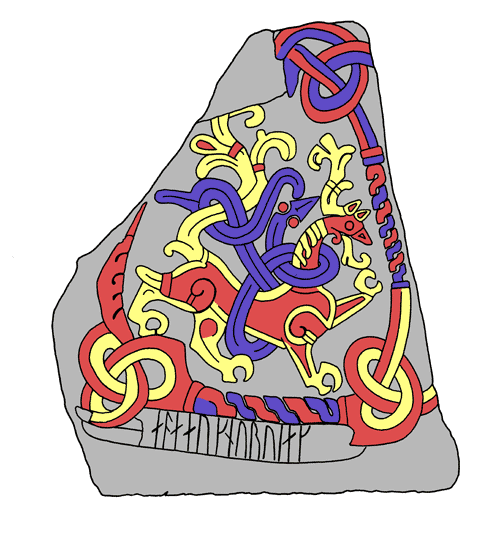The Jelling Stones are massive carved runestones from the tenth century, which are named for the town of Jelling in Denmark. Prior to the tenth century, stone carving was extremely rare, if not non-existent, in most parts of Scandanavia. Subsequently, and likely influenced by the spread of Christianity, the use of carved stone for permanent memorials became more prevalent.
The older of the two Jelling Stones is attributed to King Gorm the Old and is thought to have been raised in memory of his wife Thyra. King Gorm's son Harald Bluetooth raised the larger of the two stones in memory of his parents, in celebration of his conquest of Denmark and Norway and to document his conversion of the Danes to Christianity. Art historians consider the runic inscriptions on the Jelling stones as the best known in Denmark.

Jelling Stones
The Jelling Stones are massive carved runestones from the tenth century, which are named for the town of Jelling in Denmark.
Scholars have long considered the Jelling Stones to be visual records of the transitional period between the indigenous Norse paganism and the victory of Christianization in Denmark. The larger stone, known as Harald's stone, is often cited as Denmark's baptismal certificate (dåbsattest), containing a depiction of Christ and an inscription celebrating the conversion of the Danes to Christianity. The Jelling Stones are also strongly identified with the creation of Denmark as a nation-state, and both stones offer the earliest examples of the name Danmark (in the form of tanmaurk on the large stone, and tanmarkar on the small stone).
The runestone of Gorm, which is the older and smaller of the Jelling Stones, has an inscription that reads: "King Gormr made this monument in memory of Thyrvé, his wife, Denmark's adornment." The larger runestone of Harald Bluetooth is engraved on one side with an inscription that reads: "King Harald ordered this monument made in memory of Gormr, his father, and in memory of Thyrvé, his mother. That Harald who won for himself all of Denmark and Norway and made the Danes Christian." This larger stone is often cited as Denmark's baptismal certificate (dåbsattest), containing a depiction of Christ and an inscription celebrating the conversion of the Danes to Christianity. Harald's stone has a figure of Jesus Christ on one side and on another side a serpent wrapped around a lion. Of interest to scholars is the depiction of Christ as standing in the shape of a cross and entangled in what appear to be branches. One scholar has suggested that this imagery was used to suggest that Christ had replaced the Norse pagan god Odin, who in one myth hung for nine nights in the tree Yggdrasill.

Harald's Stone: Carving of Christ
The figure of Christ on Harald's runestone. One scholar has suggested that this imagery was used to suggest that Christ had replaced the Norse pagan god Odin, who in one myth hung for nine nights in the tree Yggdrasill.

Harald's Stone: Inscription
This Jelling Stone, with its depiction of Christ and celebration of the Conversion of the Danes, is widely regarded as Denmark's "baptismal certificate."
Remnants of red pigment show that the Jelling Stones were once brightly painted. This practice was apparently widespread across Scandinavia, with runestones at locations such as Strängnäs Cathedral (Sweden) and Oppland (Norway) bearing similar hues. Replicas made from plaster casts in the twentieth century recreate the stones' polychromatic appearances.
Replica of Harald’s Stone
This plaster-cast replica gives us an idea of the original polychromatic appearance of the Jelling Stones. National Museum of Denmark
The reliefs on Harald's Stone bear a striking resemblance to the styles of humans, animals, and abstract patterns that appear in illuminated manuscripts and on decorative arts in the British Isles of the Early Middle Ages. This common thread is a result of contact between the cultures through migration and invasion.

Animal relief on Harald’s Stone
The stylized animal bears a striking resemblance to similar forms found in the British Isles, such as in the hoard found at Sutton Hoo.